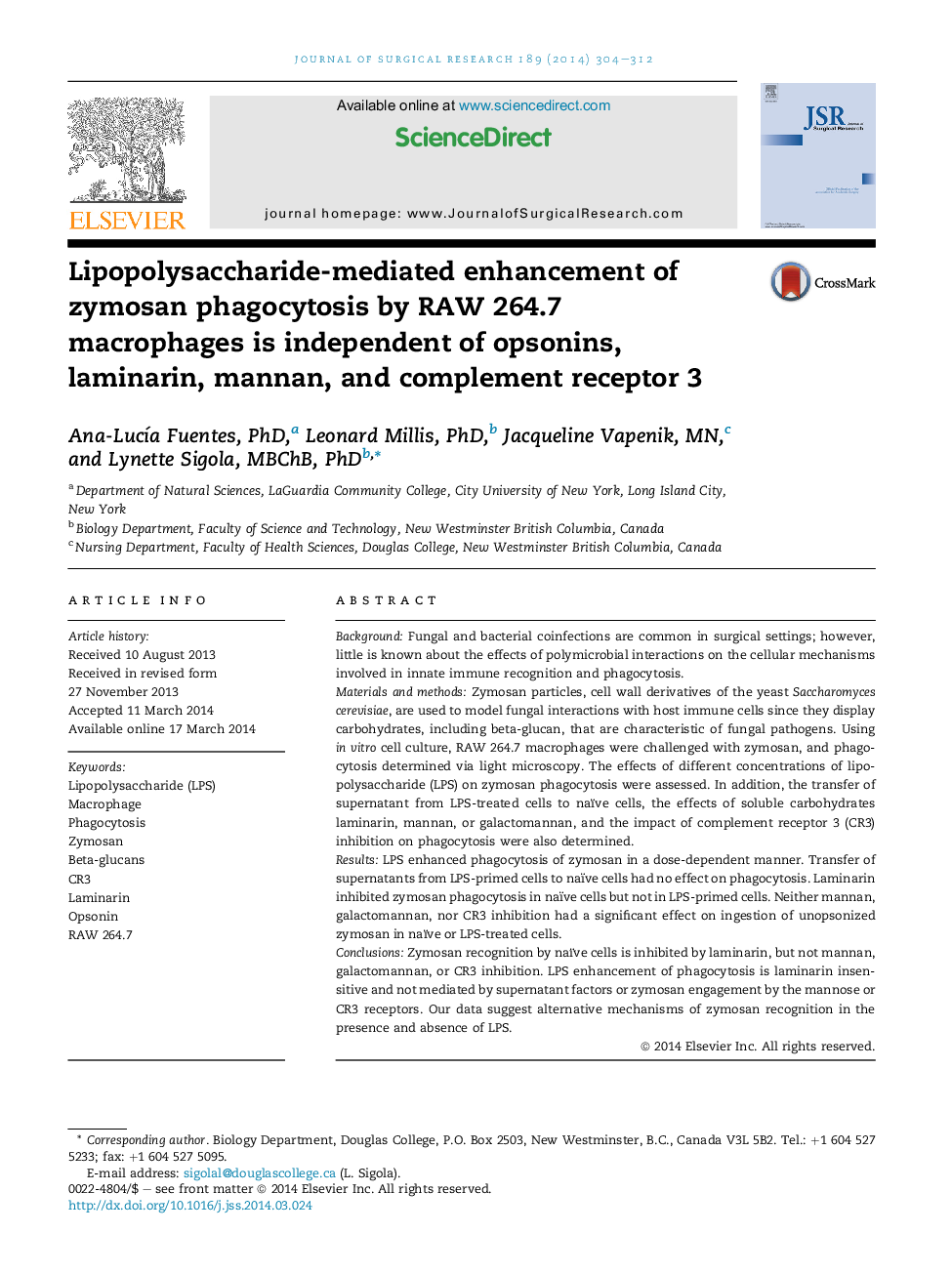| Article ID | Journal | Published Year | Pages | File Type |
|---|---|---|---|---|
| 4300108 | Journal of Surgical Research | 2014 | 9 Pages |
BackgroundFungal and bacterial coinfections are common in surgical settings; however, little is known about the effects of polymicrobial interactions on the cellular mechanisms involved in innate immune recognition and phagocytosis.Materials and methodsZymosan particles, cell wall derivatives of the yeast Saccharomyces cerevisiae, are used to model fungal interactions with host immune cells since they display carbohydrates, including beta-glucan, that are characteristic of fungal pathogens. Using in vitro cell culture, RAW 264.7 macrophages were challenged with zymosan, and phagocytosis determined via light microscopy. The effects of different concentrations of lipopolysaccharide (LPS) on zymosan phagocytosis were assessed. In addition, the transfer of supernatant from LPS-treated cells to naïve cells, the effects of soluble carbohydrates laminarin, mannan, or galactomannan, and the impact of complement receptor 3 (CR3) inhibition on phagocytosis were also determined.ResultsLPS enhanced phagocytosis of zymosan in a dose-dependent manner. Transfer of supernatants from LPS-primed cells to naïve cells had no effect on phagocytosis. Laminarin inhibited zymosan phagocytosis in naïve cells but not in LPS-primed cells. Neither mannan, galactomannan, nor CR3 inhibition had a significant effect on ingestion of unopsonized zymosan in naïve or LPS-treated cells.ConclusionsZymosan recognition by naïve cells is inhibited by laminarin, but not mannan, galactomannan, or CR3 inhibition. LPS enhancement of phagocytosis is laminarin insensitive and not mediated by supernatant factors or zymosan engagement by the mannose or CR3 receptors. Our data suggest alternative mechanisms of zymosan recognition in the presence and absence of LPS.
